This year marks NATO’s 75th anniversary. Although the transatlantic military alliance has found renewed meaning as a result of Russian aggression in Ukraine, its history is one of ups and downs, expansion and crises, and political shifts.
The North Atlantic Treaty, also known as the Washington Treaty, was signed on 4 April 1949, in Washington DC. Under the auspices of the United States, the alliance originally consisted of the US and 11 other countries: Belgium, Canada, Denmark, France, Iceland, Italy, Luxembourg, the Netherlands, Norway, Portugal and the United Kingdom. Many of these countries were still under the rubble of the Second World War but came together to face the next threat: the Soviet Union and containing its influence in Europe.
NATO has since grown to 32 members, despite criticism following the end of the Cold War that it had outlived its usefulness. The rise of China and reemergence of Russia as a military aggressor have given the US-led alliance new challenges to confront.
The Parliament looks back at some of NATO’s most significant moments since its founding in 1949.
1955: The formation of the Warsaw Pact — and West Germany joins NATO
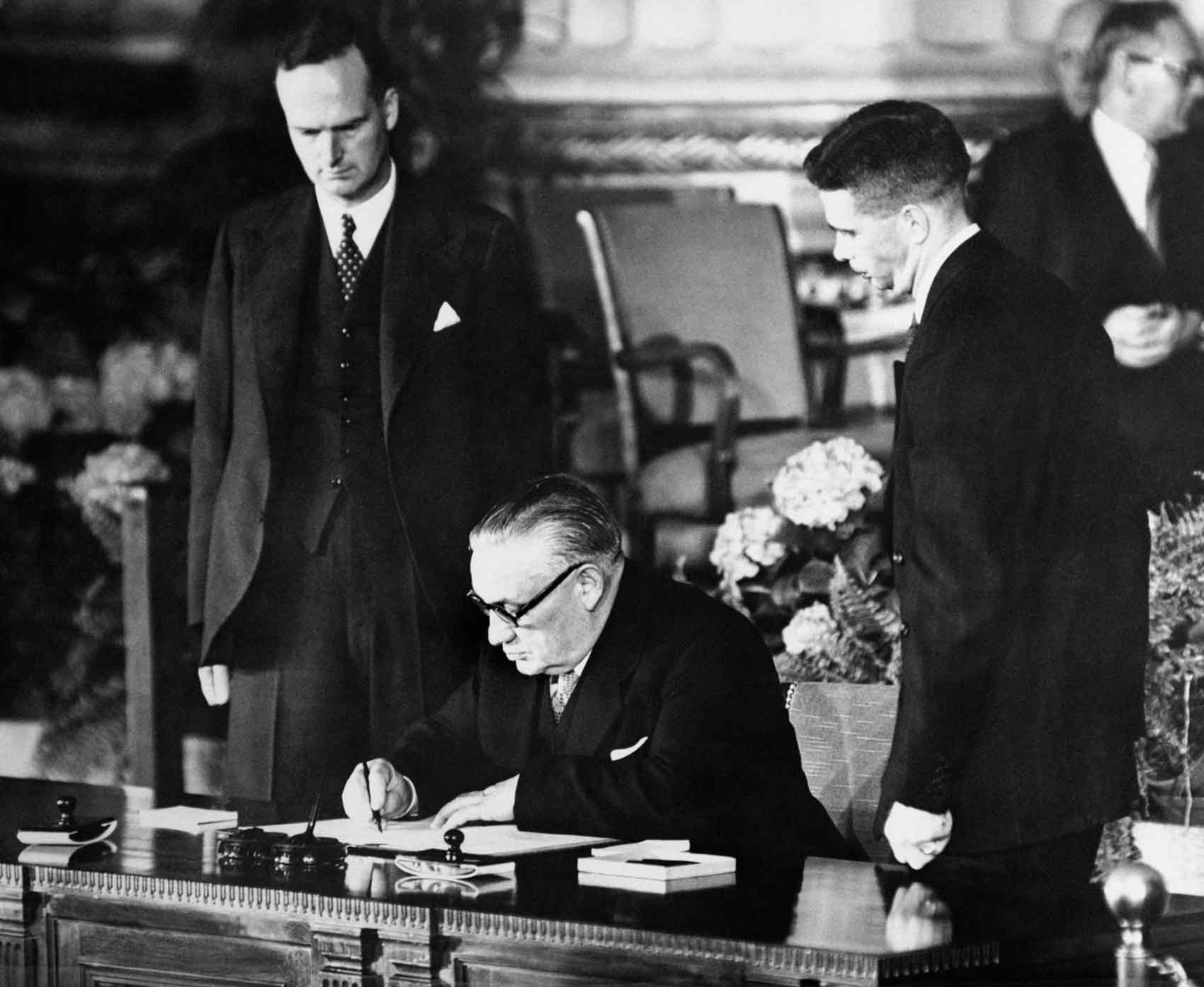 Western allies meet in Washington DC to sign NATO's founding treaty in 1949.
Western allies meet in Washington DC to sign NATO's founding treaty in 1949.
The Soviet Union responded to NATO’s creation with a military alliance of its own: the Warsaw Pact. It consisted of the Soviet Union and seven other eastern and central European countries under Soviet influence. The establishment of opposing military blocs led by the world’s nuclear-armed superpowers signified a clear division between East and West, escalating the Cold War.
With NATO in need of a defensive buffer, the recently formed Federal Republic of Germany (FRG), better known as West Germany, joined the alliance despite its disputed border with East Germany, which joined the Warsaw Pact. This marked a major step towards reintegrating the FRG into the West and shedding its Nazi image — barely more than a decade after the end of the Second World War.
1974: NATO members (almost) go to war with each other
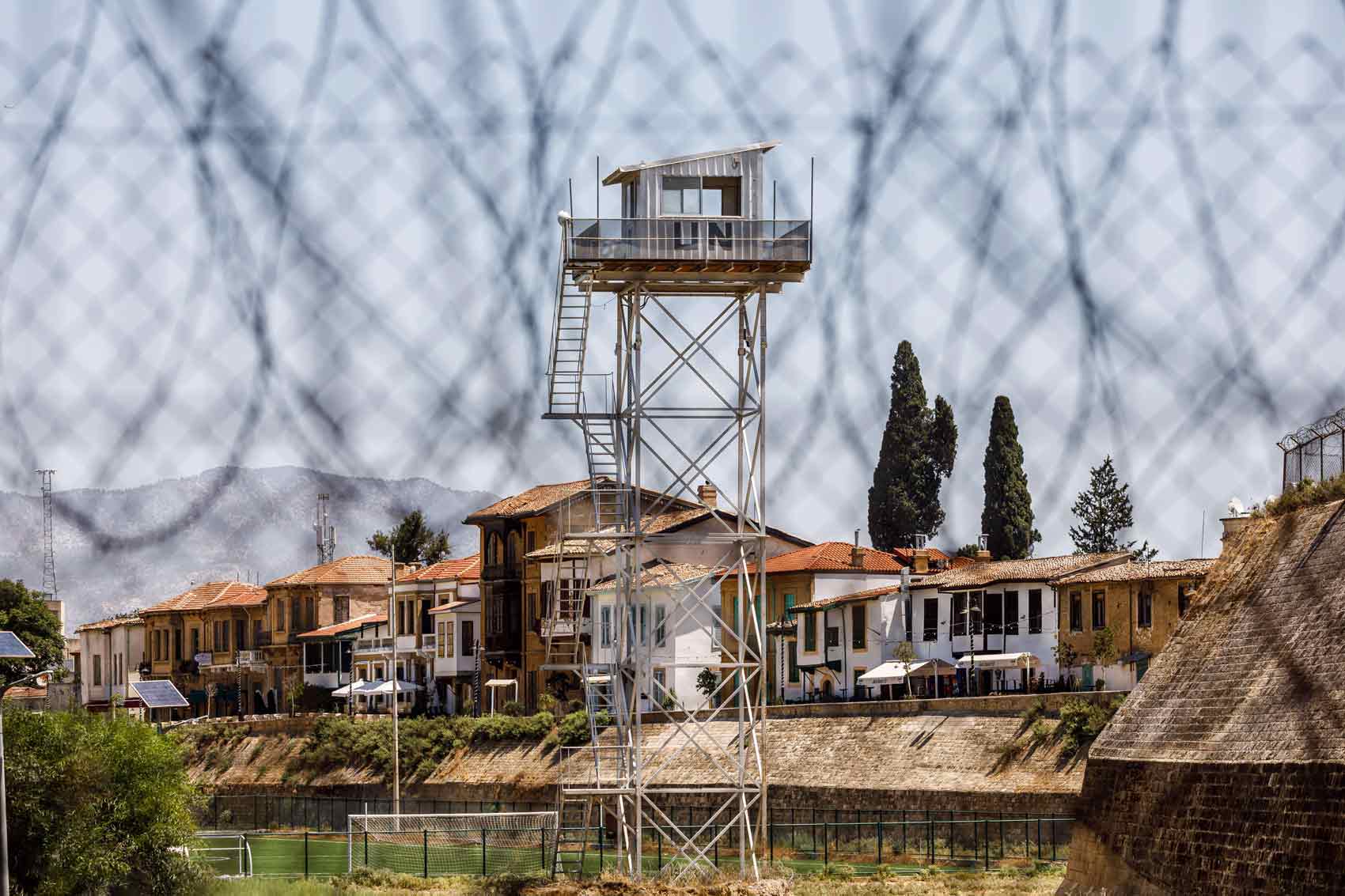 A UN outpost inside the buffer zone that divides Greek and Turkish sides of Cyprus.
A UN outpost inside the buffer zone that divides Greek and Turkish sides of Cyprus.
Greece and Turkey joined NATO in 1952 — the first expansion of the alliance since its founding. The neighbouring countries have a long history of rivalry and conflict, but their strategic location helped strengthen NATO’s military presence and political influence in the Mediterranean region.
In 1974, a Greek military coup aimed to unite the island of Cyprus — a home to Greek and Turkish communities — with Greece. Turkey invaded in response, pitting the NATO allies against each other and straining the alliance as a whole.
A ceasefire kept the two sides from engaging in more direct conflict. Cyprus remains divided to this day.
1987: Intermediate-Range Nuclear Forces (INF) Treaty
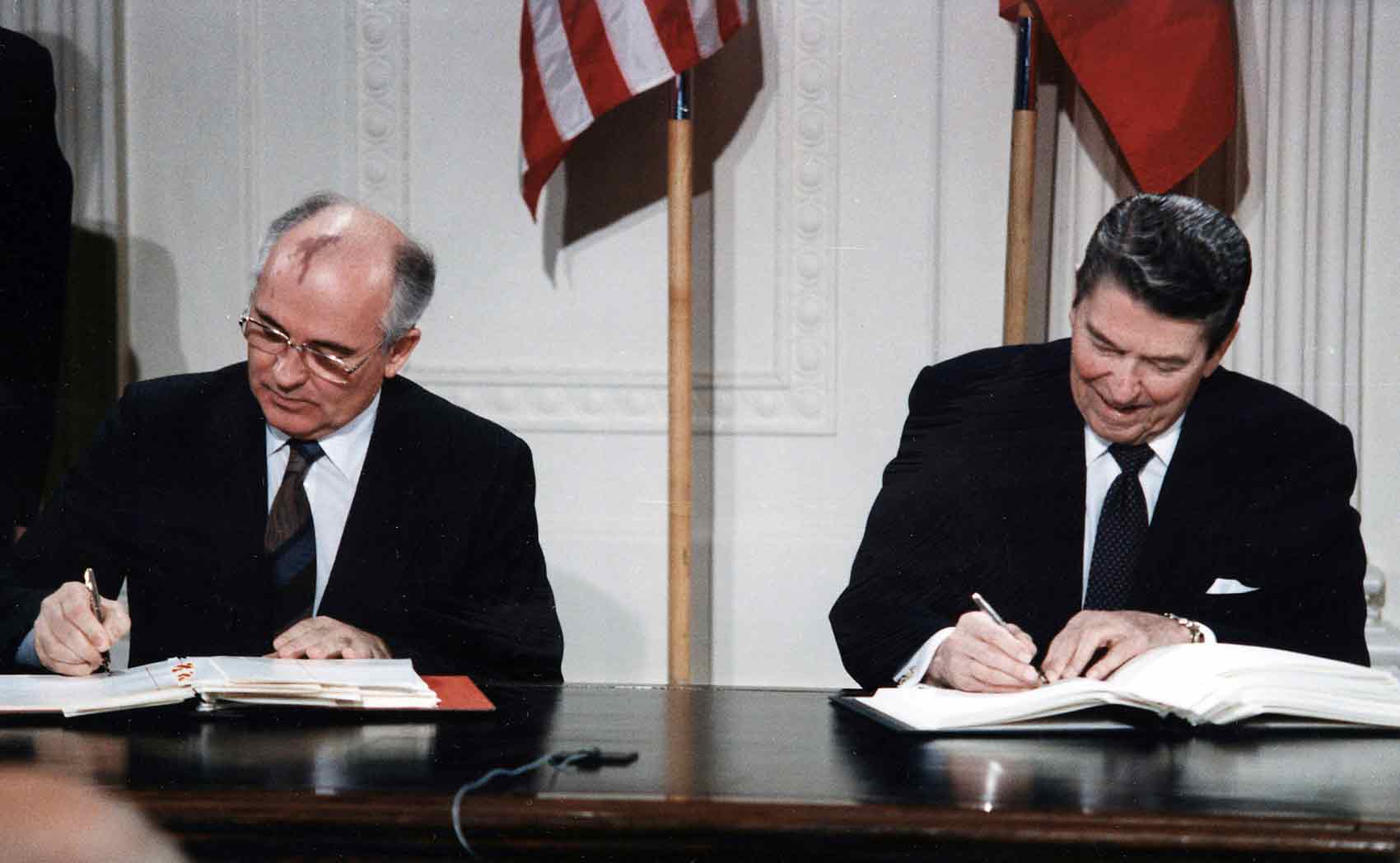 US President Ronald Reagan and Soviet General Secretary Mikhail Gorbachev sign the INF Treaty at the White House in 1987.
US President Ronald Reagan and Soviet General Secretary Mikhail Gorbachev sign the INF Treaty at the White House in 1987.
A nuclear buildup in Europe escalated Cold War tensions. Protests of US nuclearization of western Europe, especially in the FRG, caused political disagreement with NATO and increased pressure to improve arms control.
Consequently, the US and the USSR signed the INF Treaty. While not the first such treaty governing the superpowers’ nuclear arsenals, the INF was one of the most important. It eliminated a class of weapons — ground-launched ballistic and cruise missiles with distances between 500 and 5,500 kilometres — that gave little warning to the other side.
The two sides destroyed 2,969 short- and intermediate-range missiles by the implementation deadline in 1991. The US withdrew from the treaty in 2019, accusing Russia of violating it.
1989-1991: Fall of the Berlin Wall and dissolution of the Warsaw Pact
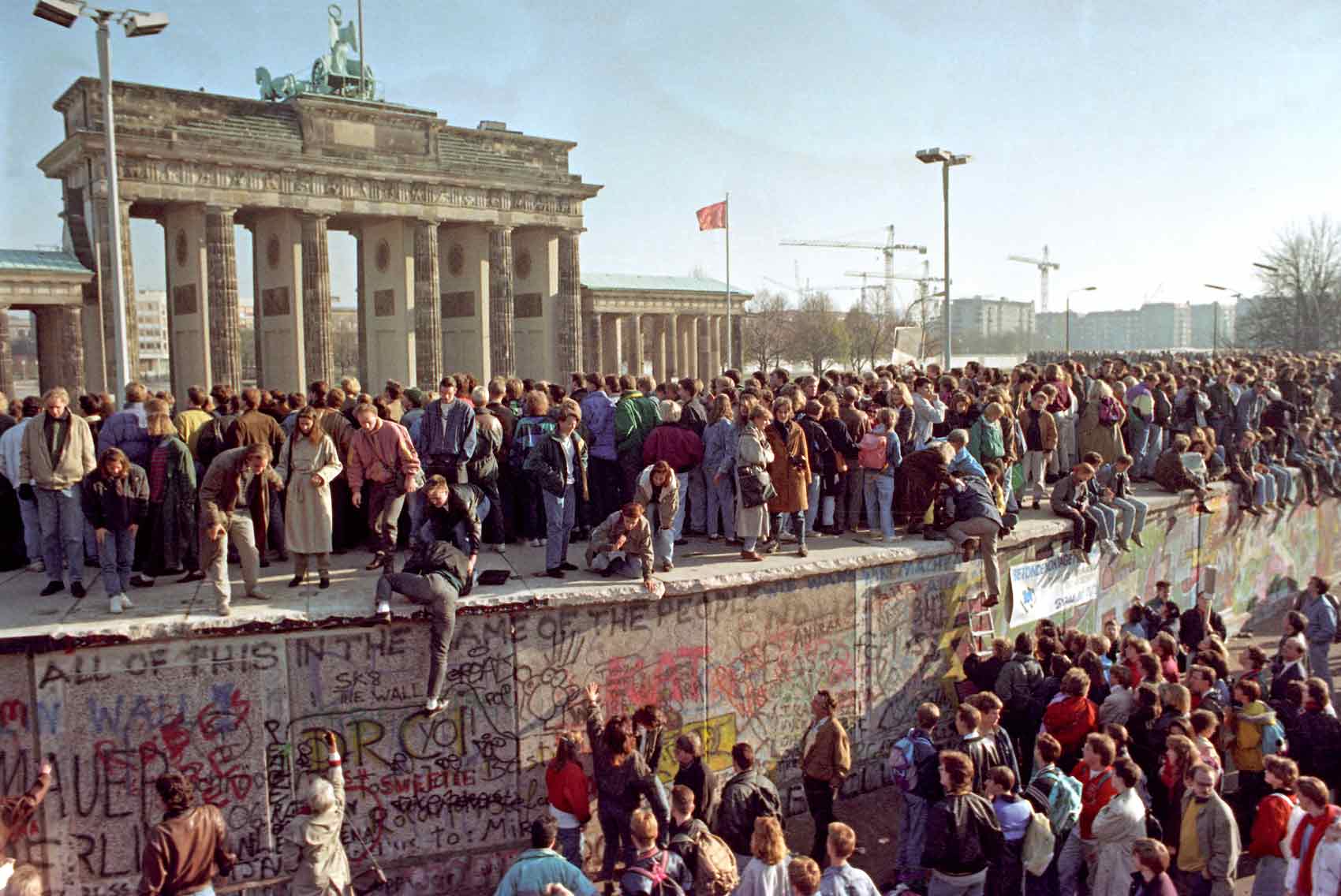 The Berlin Wall falls in 1989.
The Berlin Wall falls in 1989.
On 9 November 1989, the Berlin Wall fell — much to the surprise of most Western observers. The two Germanys became one, the Soviet Union collapsed, and the Warsaw Pact dissolved — all with stunning speed.
By 1994, the last Russian soldiers withdrew from former East Germany. With its enemy gone and the USSR’s republics and allies turning democratic, NATO was left with the existential dilemma of what to do with itself.
1993: First NATO military engagement
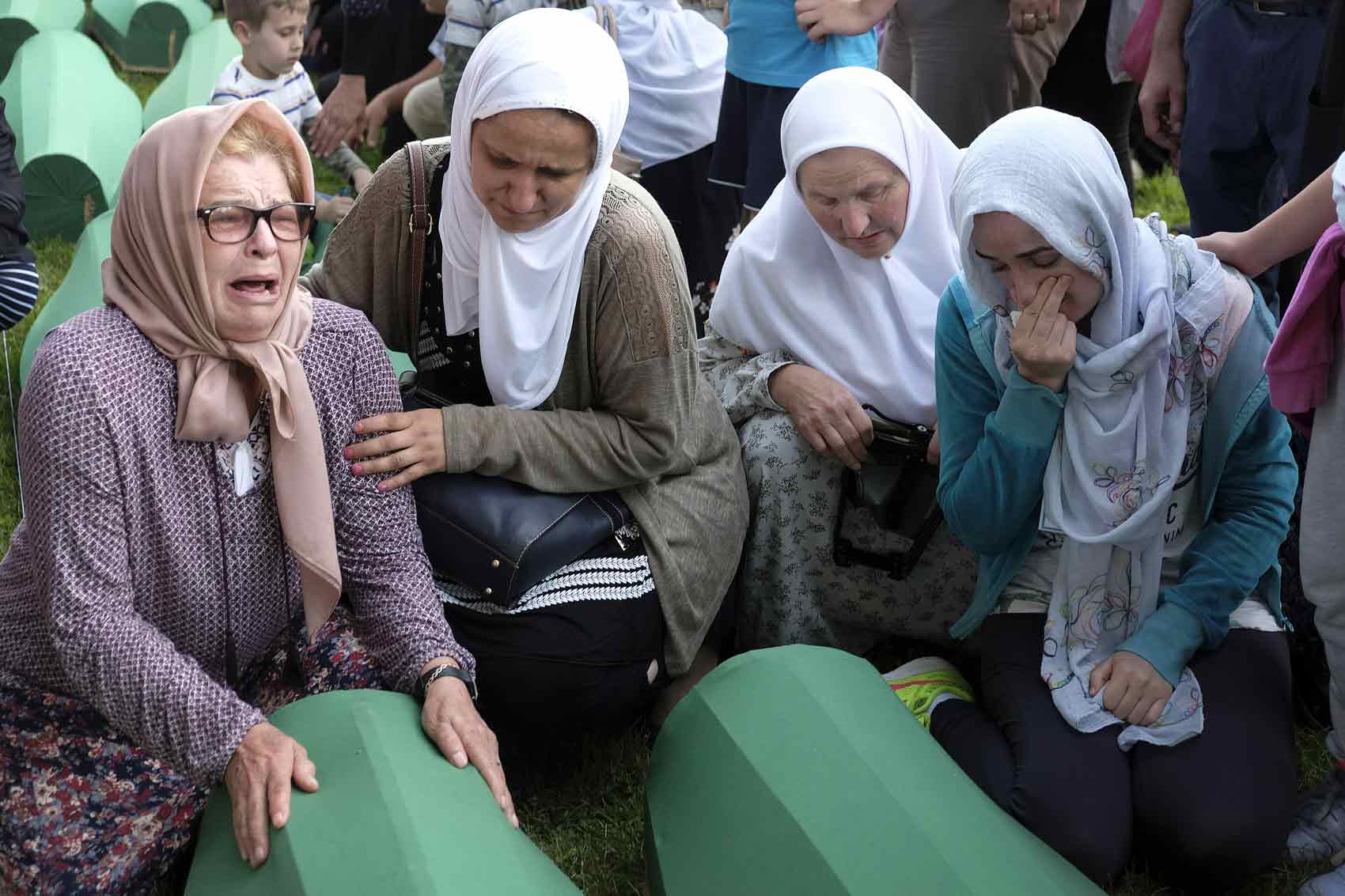 Relatives of those massacred in Srebrenica, Bosnia, in 1995 gather in 2018 to mourn and remember the event.
Relatives of those massacred in Srebrenica, Bosnia, in 1995 gather in 2018 to mourn and remember the event.
Under the auspices of United Nations resolutions seeking to end ethnic conflict in breakaway regions of now former Yugoslavia, NATO undertook its first ever combat operation. Its air forces patrolled a no-fly zone over Bosnia and Herzegovina, downing four Bosnian Serb aircraft in 1994.
Additional airstrikes took place in this period as part of an effort to protect Bosnian Muslims from a genocide carried out by Serbian forces. An on-the-ground NATO presence followed to enforce the 1995 Dayton Peace Agreement that ended the conflict. NATO handed over operations to the EU in 2004. Bosnia and Herzegovina became a NATO partner country in 2006.
1994: Founding of the Partnership for Peace programme
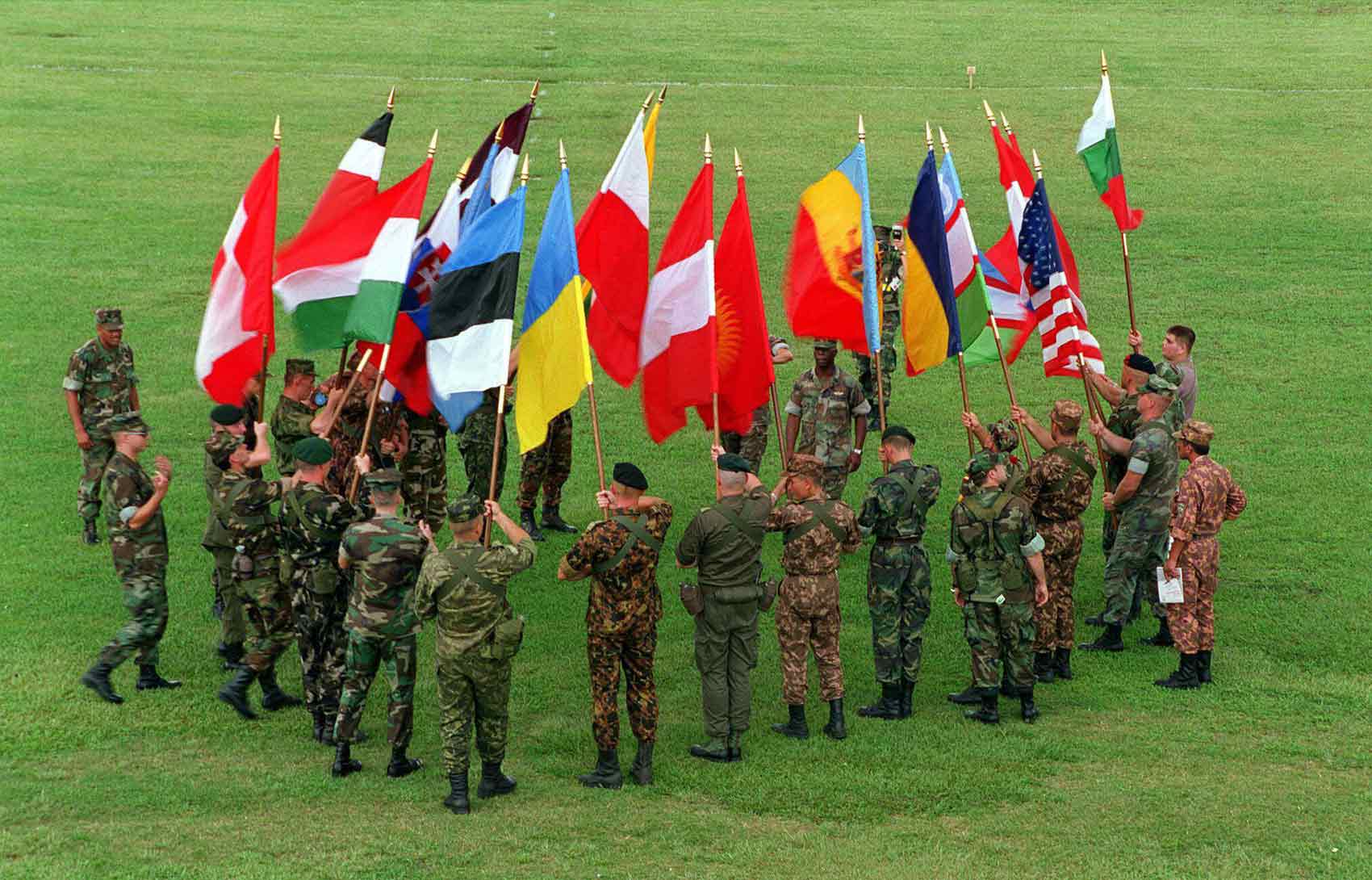 NATO allies and partners join in an exercise as part of the Partnership for Peace programme.
NATO allies and partners join in an exercise as part of the Partnership for Peace programme.
With Russian troops out of eastern Europe, NATO considered how it might sustain itself in a post-Soviet era. To that end, it launched the Partnership for Peace programme (PfP). Billed as a way to build trust and cooperation with former Warsaw Pact countries — including Russia — it was widely seen as a gateway to eventual NATO membership. Within the decade, ten ex-Soviet states or allies joined.
Russia was also part of the PfP, with early hopes of uniting former enemies to bolster common security. That relationship, however, degraded over time. Russian President Vladimir Putin has tried to frame the 1990s as one of aggressive NATO expansion towards Russian borders.
1999: NATO expansion and Kosovo war
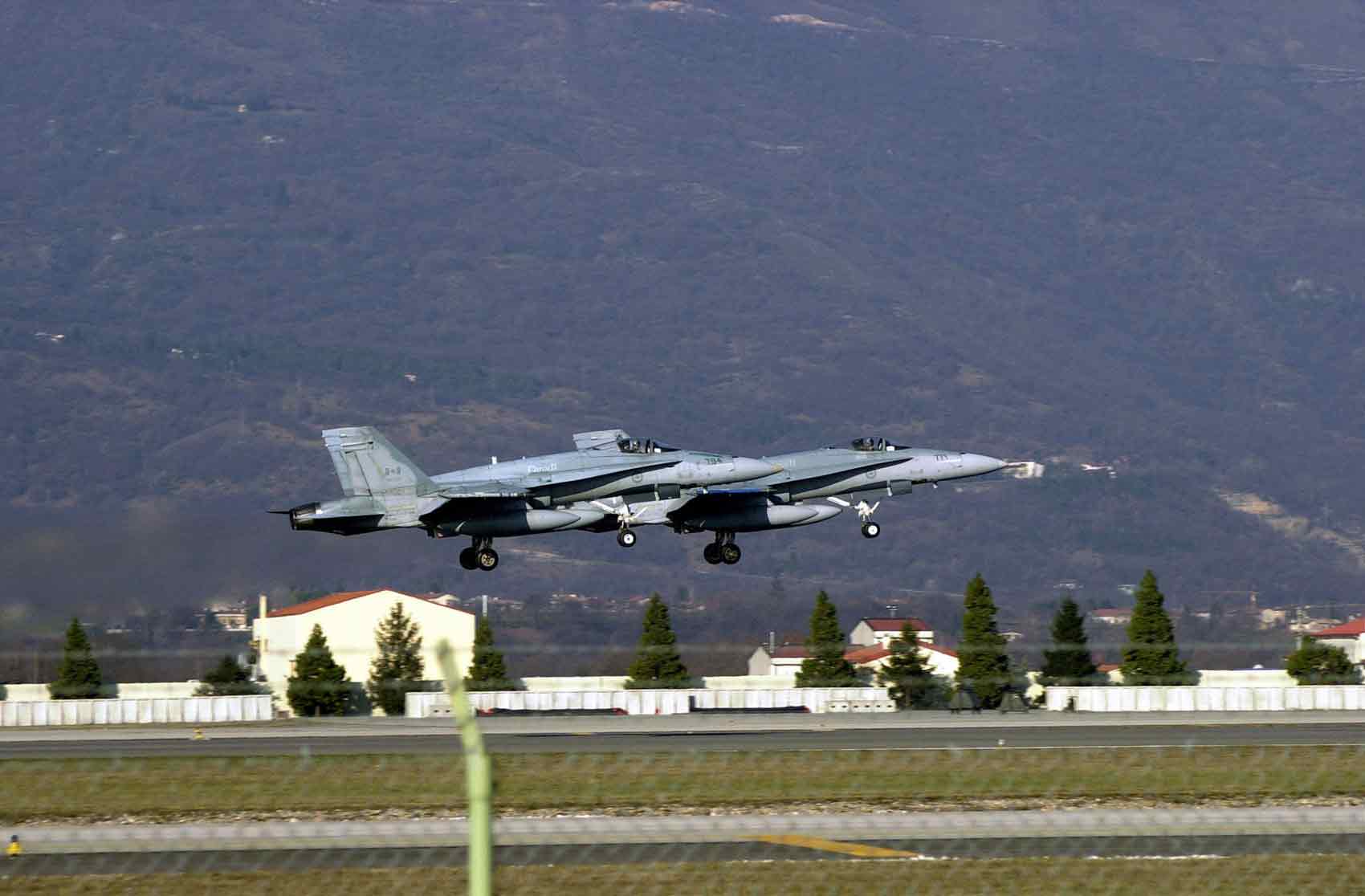 Canadian F/A-18 Hornets participate in the 1998 air campaign against Serbian-led forces in Kosovo.
Canadian F/A-18 Hornets participate in the 1998 air campaign against Serbian-led forces in Kosovo.
It was a big year for NATO. Former Warsaw Pact countries, Czech Republic, Hungary and Poland joined the alliance, bringing membership to 19. In the spring of that year, NATO conducted a 78-day air campaign against a disintegrating Yugoslavia, to halt a Serbian campaign of ethnic cleansing of Albanians in Kosovo.
While NATO said it acted to stop war crimes and defend European security, its critics accused the alliance of overreach — both according to NATO's own stated purpose and because the operation lacked UN authorisation. In one major development, a US airstrike hit China’s embassy in Belgrade. NATO said it was a mistake, but the bombing has overshadowed China’s relationship with the West ever since.
Vladimir Putin became president of Russia the same year. Close to Serbian officials, he viewed NATO’s mission as further evidence of its aggressive expansion.
2001: 9/11 and Article 5
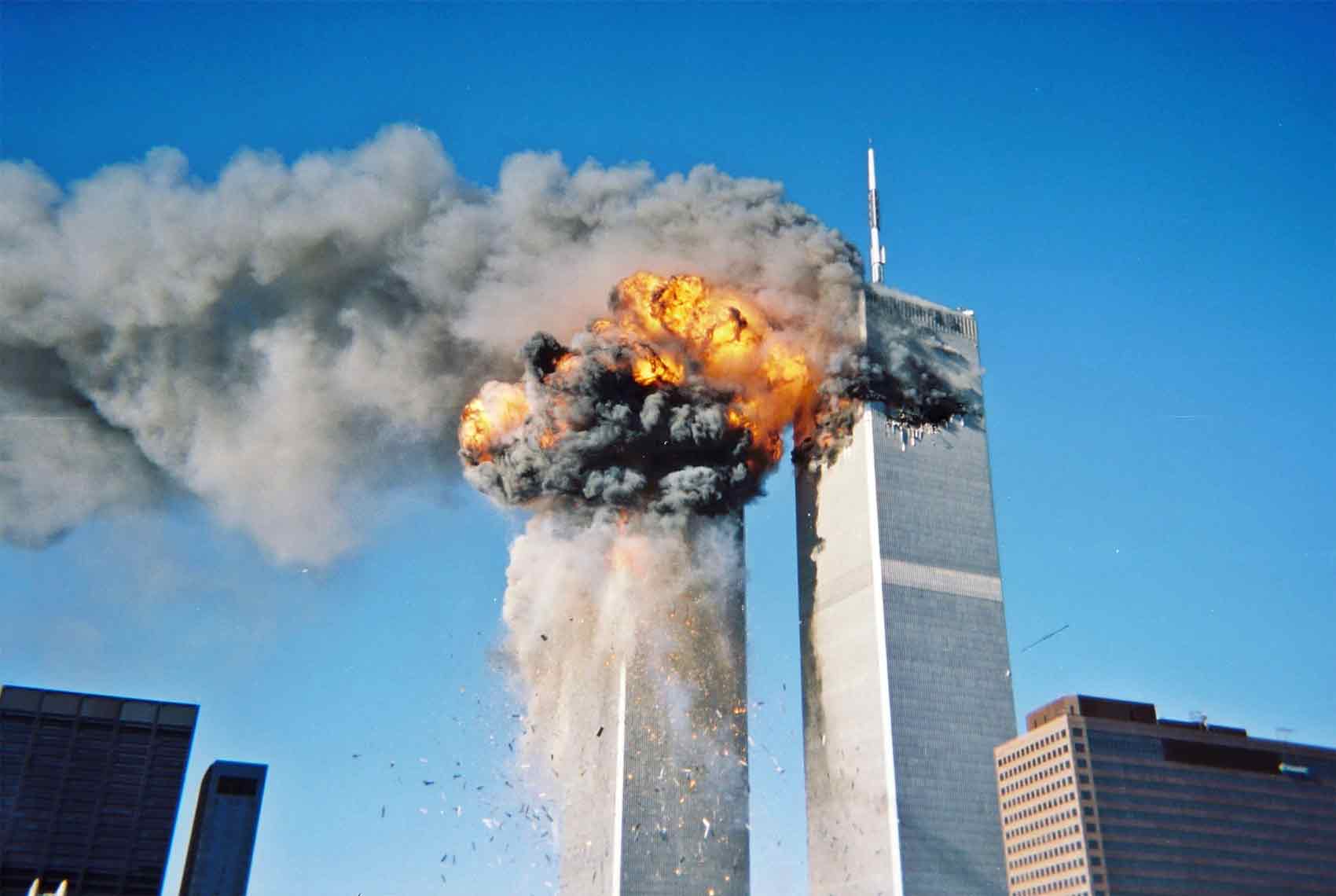 The 9/11 terrorist attack against the US led to a NATO mission in Afghanistan.
The 9/11 terrorist attack against the US led to a NATO mission in Afghanistan.
Following the 9/11 terrorist attack, NATO invoked Article 5 for the first time — an attack on one is an attack on all.
Although far outside its intended theatre of operations, NATO’s members and partners participated in the US-led campaign to oust the Taliban from Afghanistan and destroy al-Qaeda’s terror network that was based there.
NATO’s mission in Afghanistan transitioned from security to training in 2015. That concluded in 2021, when a hastily organised withdrawal, prompted by the US, led to the collapse of the Western-backed national government and the return of the Taliban to power.
It was an embarrassing moment for the transatlantic alliance, seeming to give credence to French President Emmanuel Macron’s earlier assessment that NATO was suffering from “brain death.”
2004: A big expansion
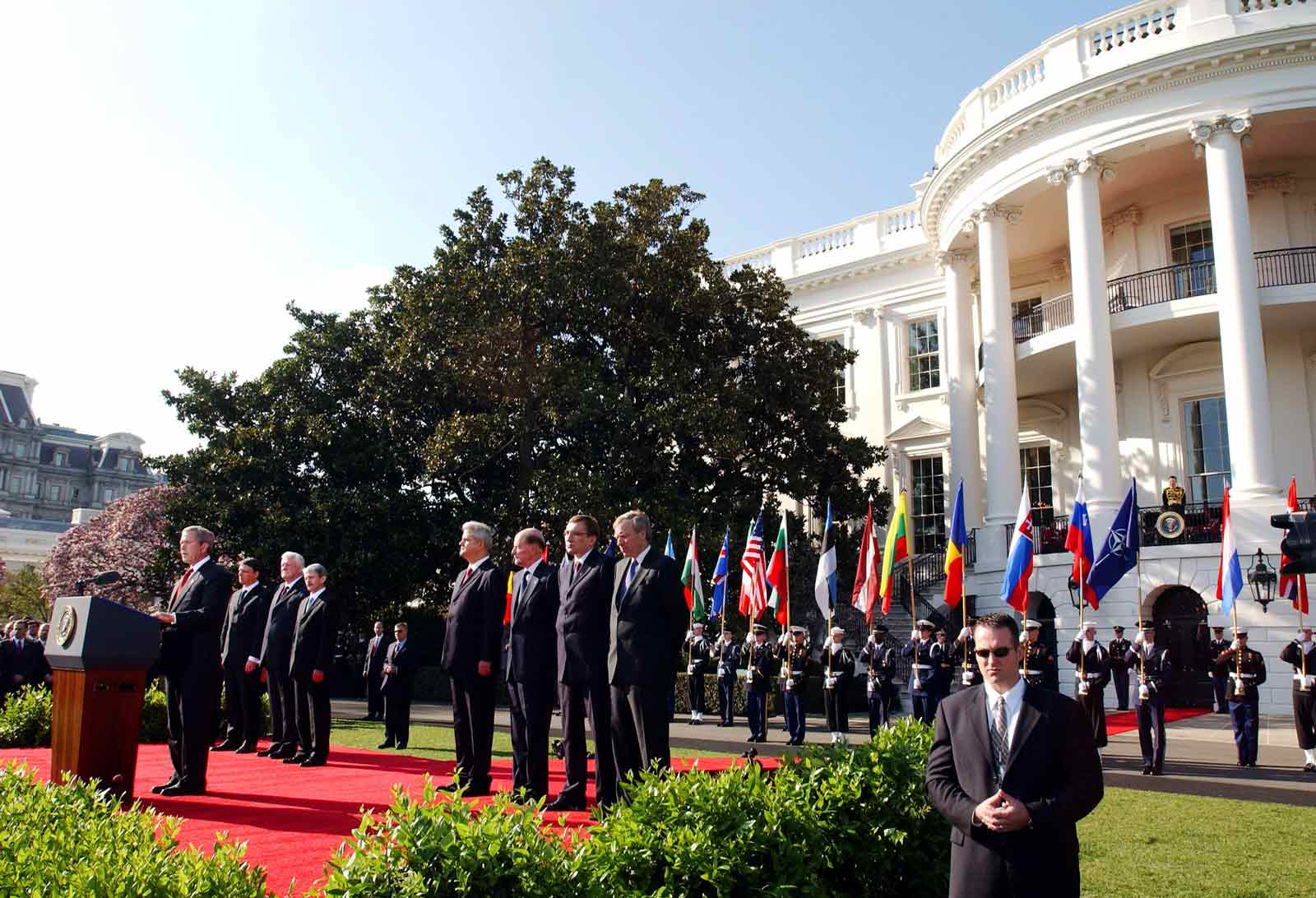 US President George W. Bush speaks at a ceremony to welcome seven new members to NATO in 2004.
US President George W. Bush speaks at a ceremony to welcome seven new members to NATO in 2004.
NATO underwent its largest expansion to date, admitting seven new members at once: Latvia, Bulgaria, Estonia, Lithuania, Romania, Slovakia and Slovenia.
For the former Warsaw Pact countries, NATO membership meant protection against their former rulers in Moscow. NATO was able to extend its reach into central and eastern Europe.
2008: NATO opens the door to Georgia and Ukraine
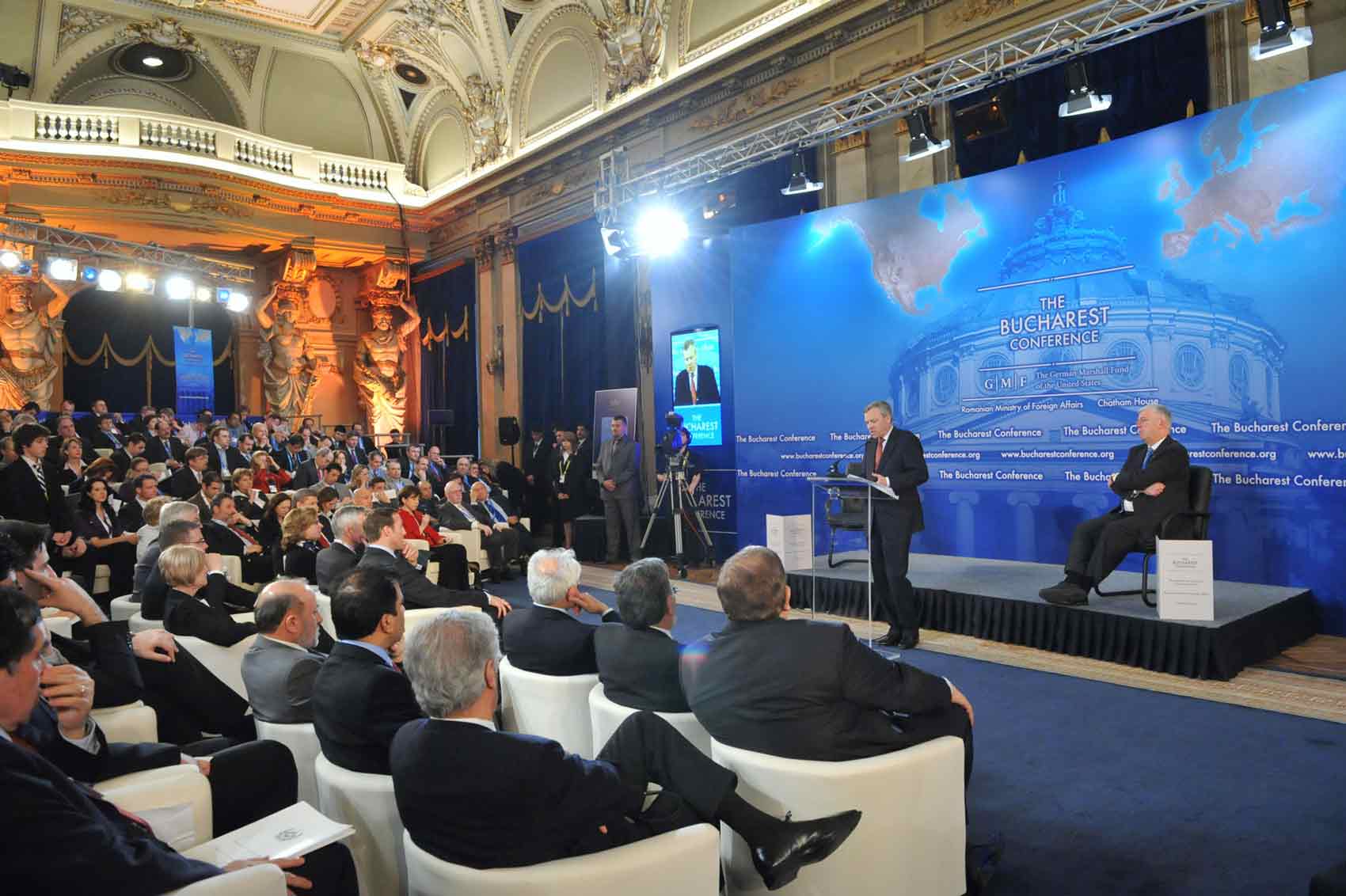 NATO leaders gather in Bucharest, Romania, in 2008.
NATO leaders gather in Bucharest, Romania, in 2008.
NATO officially recognised Ukraine and Georgia’s “aspirations” to join the alliance and called on the countries to continue their development of democratic institutions.
The statement, however, did not make much progress in real terms. Later that year, Russia invaded Georgia and seized the regions of Abkhazia and South Ossetia, which it occupies to this day. Whether NATO's overture to the former Soviet republics prompted Putin's military action remains a matter of debate.
2014: NATO suspends most cooperation with Russia
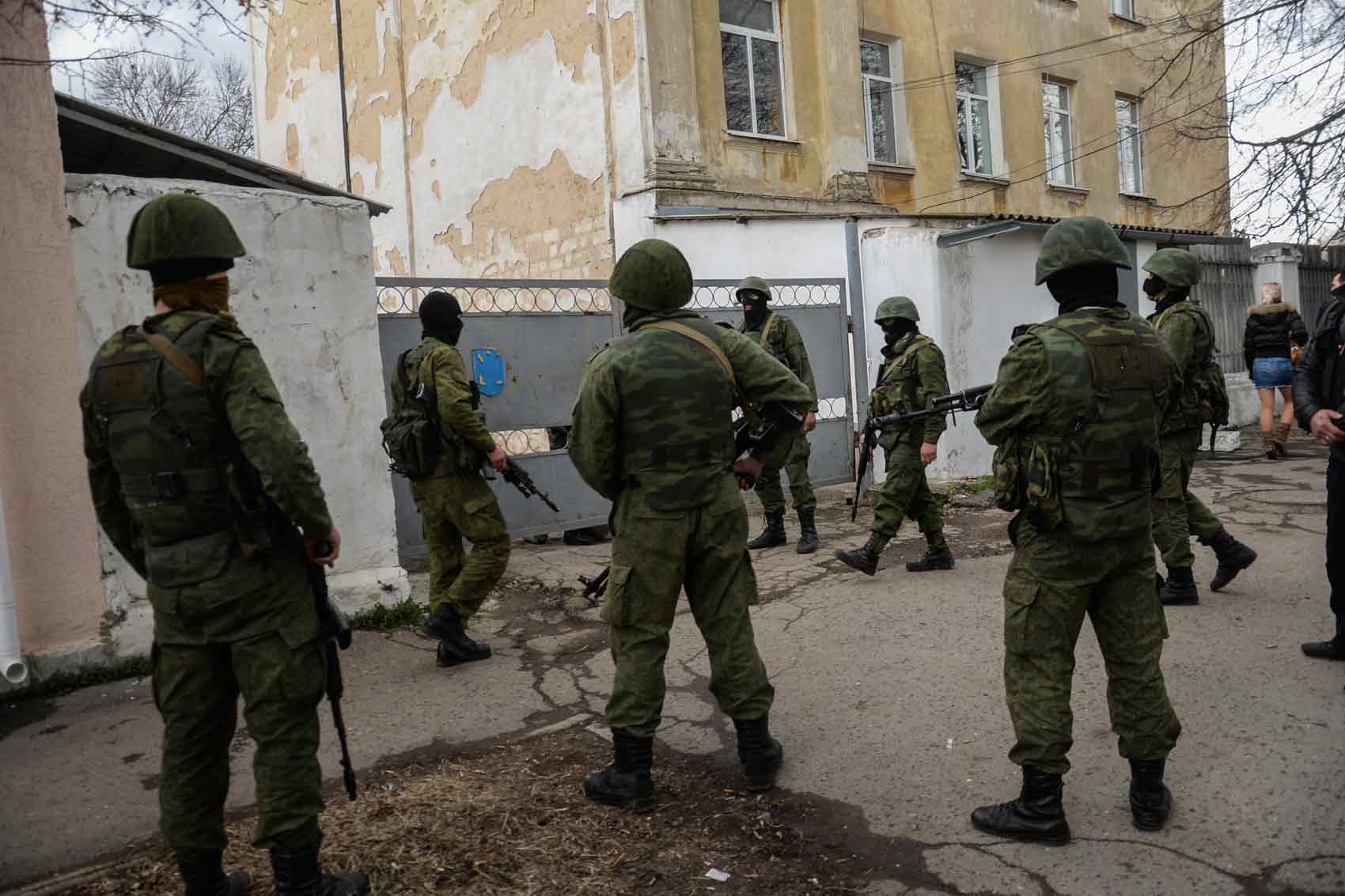 In Crimea, armed men with unidentified insignia block military bases during Russia's 2014 annexation of the Ukrainian peninsula.
In Crimea, armed men with unidentified insignia block military bases during Russia's 2014 annexation of the Ukrainian peninsula.
In what many Western observers now call the beginning of Russia’s invasion of Ukraine, Russia’s annexed the Crimean Peninsula, where it already maintained a naval base. It also backed separatists in eastern Ukraine, wrestling that region away from Kyiv to form breakaway republics. Like those in Georgia, few countries recognize them as independent.
In response, NATO suspended most forms of cooperation with Russia. The Wales Summit, in the same year, resulted in the Readiness Action Plan, which aimed to improve NATO’s rapid response to crises. This was also when NATO members agreed to a defence spending guideline of 2% of GDP. Twenty-three members have since hit that target, while the rest have this year to get there.
2022-2024: Response to Russia’s full-scale invasion of Ukraine
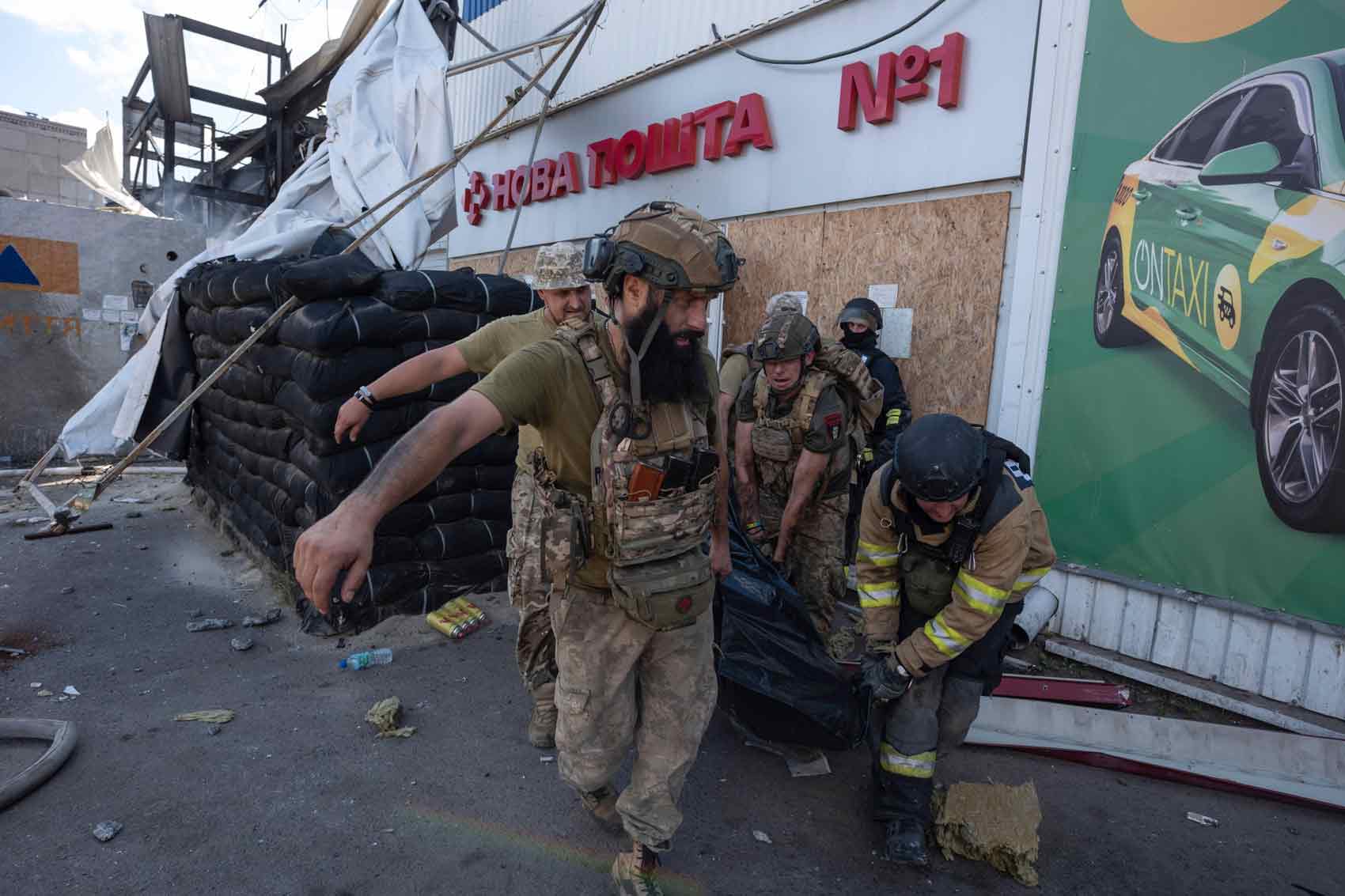 Emergency workers and soldiers carry out a victim of a Russian missile strike on a supermarket in Ukraine's Donetsk region in August.
Emergency workers and soldiers carry out a victim of a Russian missile strike on a supermarket in Ukraine's Donetsk region in August.
“Brain death” no more. Russia’s full-scale invasion of Ukraine, the largest war in Europe since the Second World War, has revitalised the transatlantic alliance.
NATO has significantly increased its military presence in eastern Europe, recommitting itself to common defence. Several of its members have dramatically boosted national defence spending, and the US has again delayed its full “pivot” to the Asia-Pacific region.
As part of a larger Ukraine Contact Group, NATO members have provided billions of dollars’ worth of weapons, training and other assistance to Ukraine. While NATO debates whether to let Ukraine become a member, long-time neutral countries Finland and Sweden did so in 2023 and 2024, respectively.
Sign up to The Parliament's weekly newsletter
Every Friday our editorial team goes behind the headlines to offer insight and analysis on the key stories driving the EU agenda. Subscribe for free here.